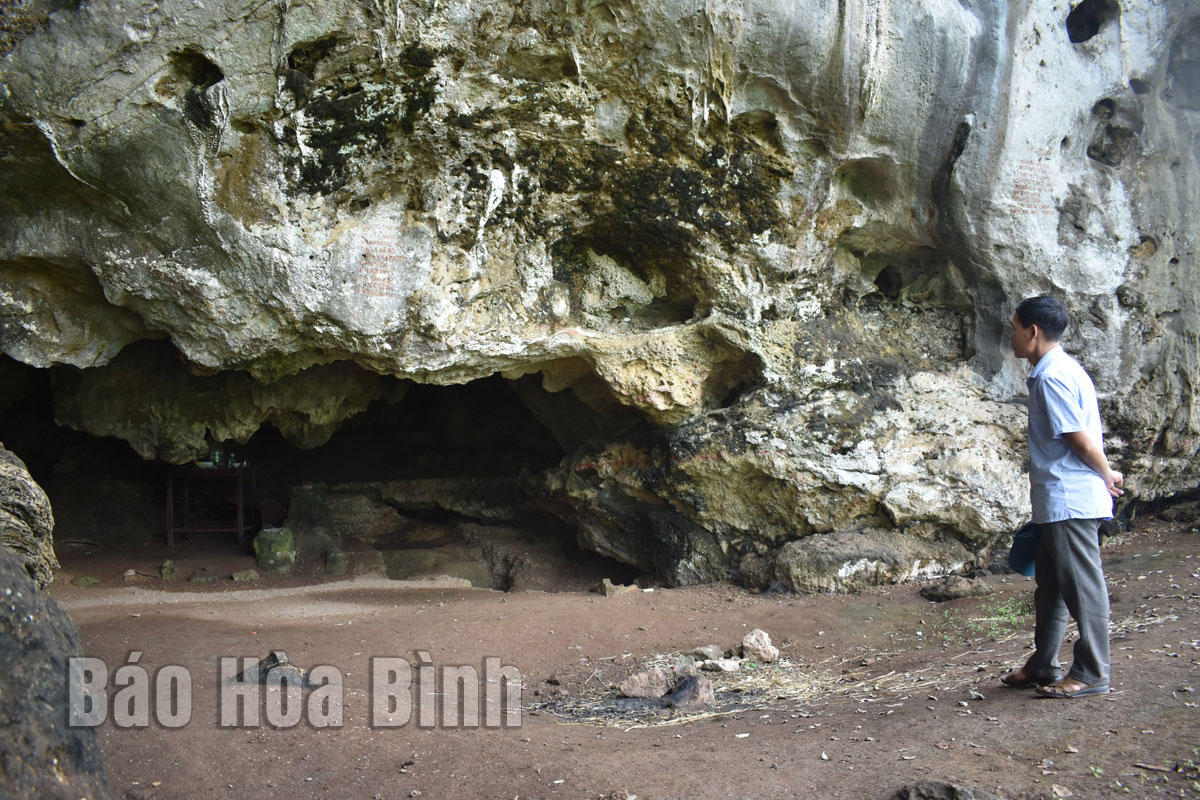



Cho Cave in Hui hamlet of Cao Son commune, Luong Son district, was a long-term place of residence of prehistoric humans in the Hoa Binh Civilisation.
At Sung Sam Cave in Hanoi’s My Duc district, researchers have collected 2,233 stone, bone, and pottery items, along with a number of human teeth. These artefacts featured typical characteristics of working techniques in the Hoa Binh Civilisation. In terms of stone tool making, aside from direct flaking and limited flaking on the edges of pebbles, Sumatralith – a technique to create almost oval to rectangular shaped stone artefacts made by unifacially flaking around the circumference of a pebble – also appeared. In addition, 117 rudimentary pottery pieces were also unearthed at this cave.
Vestiges found at the Sung Sam Cave showed that hunting and foraging were two main economic activities of primitive humans in the Huong Son - Sung Sam area. There were also many bone pieces with burn marks, indicating that humans at that time cooked meat over fire. The wide range of prehistoric humans’ traces, including animal teeth, stone tools, and pottery pieces, proved that Sung Sam used to be a large and long-term workshop and burial site similar to some other archaeological sites dating back to the Hoa Binh Civilisation like Bon and Doi villages.
At Muoi Cave in Man Duc town of Tan Lac district (Hoa Binh province), archaeologists discovered primitive humus pits, over 900 objects, and two graves. Excavation results showed this relic site dates back to the Hoa Binh Civilisation, about 10,000 - 7,000 years ago. This place was recognised as a national archaeological relic site in 1995.
Meanwhile, findings at Cho Cave in Hui hamlet of Cao Son commune (Luong Son district) revealed that the cave, dating back about 10,000 years, was a long-term place of residence and also a workshop of humans in the Hoa Binh Civilisation. It was named a national archaeological relic site in 2000.
Dr. Nguyen Viet, Director of the Centre for Prehistoric Southeast Asian Studies, said about 20,000 - 25,000 years ago, the first inhabitants of the Hoa Binh Civilisation lived scatteredly across the areas which are now districts of Hoa Binh province. They mainly lived on hunting and foraging, and this period was very long.